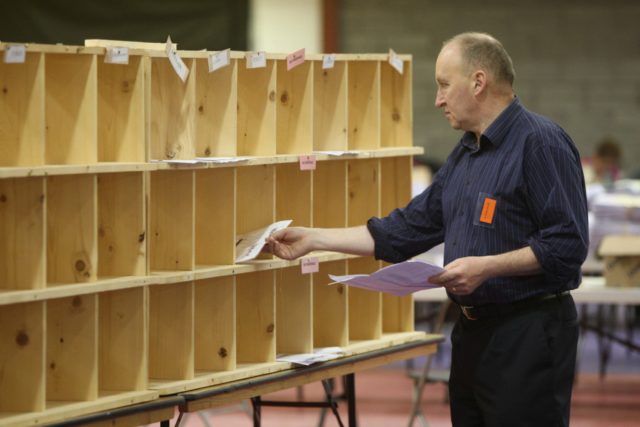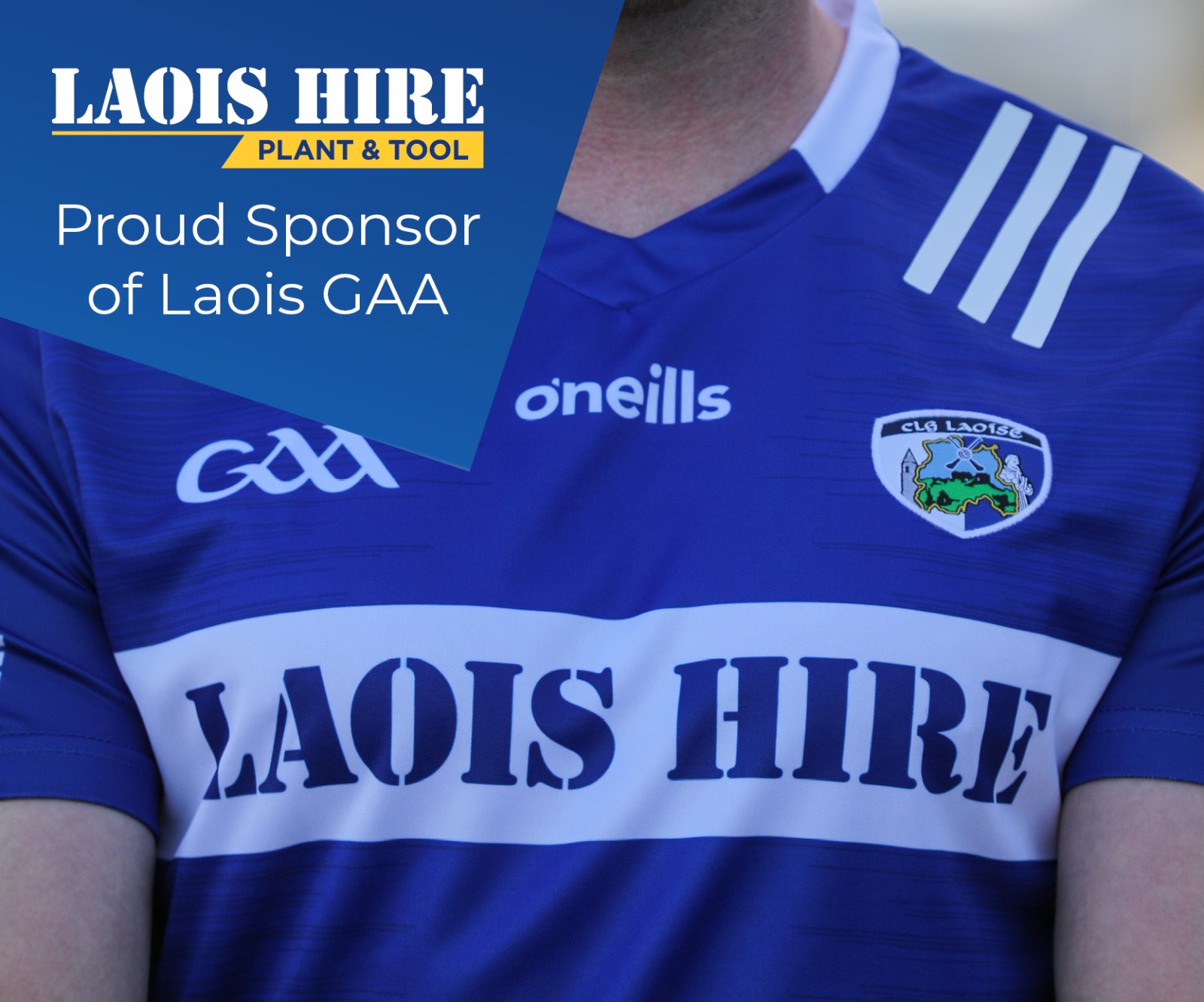There has been so much election coverage over the last couple of weeks that it’s easy to become overwhelmed by it all.
Here we attempt to answer some of the questions people may have over the next couple of days.
Why are we having an election? How do they count the votes? Why are some Laois people not voting in Laois? Who do we have to vote for?
What are tallies, transfers and quotas? And what happens after it’s all over?
So why are we having an election?
The Irish people must vote at least every five years for the politicians they want to run the country. For the last four years, Fine Gael have led the country along with the support of a couple of Independents.
In all there will be 160 TDs elected (up from 158 four years ago), meaning that to make a Government you would need 81 of them to have enough support to pass votes in the Dáil. Because Fine Gael only won 50 seats in 2016, they were way off what they needed, even after bringing a few Independents on board.
So you’ll have heard over the last couple of years of a thing called ‘Confidence and Supply’. It was a new phrase in Irish politics but it essentially meant that Fianna Fail accommodated the Government without actually teaming up with them. They never voted against Fine Gael in the Dáil.
The initial arrangement was for three Budgets though few expected it would even last that long. That it lasted four years is considered a surprise.
In any case it reached the end of the road and Taoiseach Leo Varadkar decided to have an election a full year before he had to as the last General Election was only four years ago, in February 2016.
And when, where and how do we vote?
Polling day is this Saturday, February 8. You can vote any time from 7am to 10pm. You should get your polling card posted to your home address should bring that with you to the polling station along with ID.
It is the first time that a General Election will be held on Saturday since 1922 so it will be interesting to see how that effects turnout – and will it lead to more students and younger people using their right to vote. Needless to say, you have to be over 18 to vote and on the Register of Electors.
You will hear all about things like ‘first preferences’, ‘Number 2s’ and ‘transfers’ over the coming days. But the simple thing to keep in mind is – give your preferred candidate your Number 1 vote, your second preference Number 2 and so on. You don’t have to continue your preference all the way down but it is actually relevant and a low preference vote that you give someone could come into play.
What’s going on with the constituencies?
Right. Since the foundation of the state Laois and Offaly were always part of the same constituency, electing five TDs. That was until 2016, when they were split into two smaller three-seat constituencies.
It is decided on by population with a recommendation that there should be no fewer than 20,000 people per TD and no more than 30,000. Because the population of Laois has grown so much in recent years it has led to a lot of messing around with the boundaries.
In 2016, Monasterevin and some other parts of Kildare on the Laois border were brought into Laois to bring up the population to have enough for a three-seater. A part of North Tipperary was brought into Offaly.
Now they (an independent Boundary Commission) have put Laois and Offaly back together but because the population now is too big for a five-seater they have siphoned off Portarlington, Gracefield Killenard and Ballybrittas and sent them to Kildare along with Monasterevin. It actually means that Kildare South will have people from three different counties voting in it.
North Tipp has gone back to Tipperary. It has led to widespread frustration and a general consensus that the county boundaries – that serve the GAA and local authorities so well – should not be broken.
Would it really make that much of a difference if it was one TD to 32 or 33,000 people? Should keeping the county boundaries intact not supersede the ratio in terms of importance?
In instances where they need by-elections – as was the case in four constituencies after last year’s Local Elections – that is the case anyway. Constituencies are down a TD for a number of months.
It could be worse though – Sligo-Leitrim also takes in part of Donegal and Cavan. At the last election one voter spoiled their vote by simply writing ‘I am from Cavan’ on the ballot paper.
Who can I vote for in Laois then?
If you’re not in Portarlington, Killenard or Ballybrittas, you are in the Laois-Offaly constituency. There are six outgoing TDs and only five seats – which means that at least one of them won’t be going back to the Dáil. In all there are 15 candidates in Laois-Offaly on this occasion.
The Laois TDs for the last term were Charlie Flanagan (Fine Gael), Sean Fleming (Fianna Fail) and Brian Stanley (Sinn Fein).
The Offaly TDs were Marcella Corcoran-Kennedy (Fine Gael), Barry Cowen (Fianna Fail) and Carol Nolan (Independent).
The other candidates in Laois are John Daly (Irish National Party), Pauline Flanagan (Fianna Fail), Stephen Tynan (People Before Profit) and Noel Tuohy (Labour).
In Offaly you have Pippa Hackett (Green Party), John Leahy (Independent), Peter Ormond (Fianna Fail) and Ken Smollen (Irish Democratic Party). You can read more about the candidates here.
And in Kildare South?
This is a slightly funny one. For the last General Election, Kildare South was a three-seat constituency and elected Martin Heydon (Fine Gael), Fiona O’Loughlin (Fianna Fail) and Sean O Fearghail (Fianna Fail).
Sean O Fearghail was appointed as the Ceann Comhairle in the Dail (effectively the chairman and the one that has to try keep law and order on them). A perk of that job is that you get automatic re-election.
But because of the constituencies being re-drawn and the larger population, Kildare South is now a four-seater. One of them is already filled with O Fearghail but there are still three up for grabs. With only two outgoing TDs there will be at least one new face heading up to the Dáil when it reconvenes.
In all there are 11 candidates. The other candidates are Cathal Berry (Independent), Suzanne Doyle (Fianna Fáil), Linda Hayden (Social Democrats), Ronan Maher (Green Party), Fiona McLoughlin-Healy (Independent), Anita Nic Ghib (Aontú), Patricia Ryan (Sinn Fein), Roisin ui Bhroin (Solidarity-People Before Profit) and Mark Wall (Labour). You can read more about the candidates here.
As well as Portarlington, Killenard and Ballybrittas, Kildare South takes in Newbridge, Kildare Town, Rathangan and Kilcullen and stretches up to Clogherinkoe on the Meath border on one side and to Ballymore Eustace on the Wicklow border on the other.
Naas, Celbridge, Maynooth, Leixlip and Kilcock are all in North Kildare, which is also a four-seat constituency.
Who’s going to win overall?
A very good question and it’s one that might not even be answered in full after the votes are counted.
Fine Gael left the Dáil with 47 seats (they lost a few between 2016 and now), Fianna Fail had 45 and Sinn Fein had 20. There were also 22 Independents while Labour had 7, People Before Profit 6 and the Green Party 3. There was a handful of others also like Social Democrats (2), Aontu (1) and Independents 4 Change (1).
The opinion polls – which are conducted mostly on behalf of the various national newspapers – are showing increased support for Sinn Fein and a drop in support for Fine Gael. Fianna Fail were initially fancied to do better than they are but they are being considered at a similar level of support as Sinn Fein.
Since first entering the political space in 1987, Sinn Féin have never been as popular in the opinion polls and look almost certain to return with their greatest number of seats ever.
What you can be sure of though is that Fianna Fail will win more seats than Sinn Fein simply because they are running almost twice the number of candidates.
And what happens when we know who is elected?
That’s when the real fun and wheeling and dealing begins. No party will be close to an overall majority on their own so there will be negotiations between all the parties – big and small – to see who forms the next Government.
Sinn Féin, who have never been in Government in Ireland before, have said that they are willing to speak with Fine Gael and Fianna Fáil – though those two parties have said on numerous occasions that they will not go into power with them.
The smaller parties generally get assurances on certain issues and an agreed number of ministerial roles in return for their support.
It is possible too that there could be a coalition of Fianna Fáil and Fine Gael, something that has never happened before – or that there is a return to the ‘Confidence and Supply’ arrangement that we saw in use over the last four years.
When they do get back to the Dáil, a vote will take place among the TDs as to who will lead the Government and who will be the next Taoiseach. Will Leo Varadkar be the main man again? Will Micheal Martin get his time and no longer be the only Fianna Fáil leader never to be Taoiseach? Or could Mary Lou McDonald be the first female Taoiseach?
And this Green Wave?
That is in reference to the supposed increase in support for the Green Party, who are very strong on Climate Change and the environment, two massive issues at the moment.
They did better than ever in last year’s Local and European Elections, increasing their representation to historic highs in both.
They also won a seat in Dublin in last November’s Dáil election so their support is translating into votes. There are signs of that in Laois-Offaly now too. Pippa Hackett won an historic first seat for the Greens on Offaly County Council and is now hoping that transfers to Laois for this General Election.
They only won two seats in the last General Election (increased to three in the by-election) but they have been in power before. They were coalition partners of Fianna Fail from 2007 to 2011 but lost all six of their TDs at the 2011 election. This, then, could be a second coming of sorts for them.
How are the votes counted?
After the polls close on Saturday night at 10pm they will be stored and brought to the count centre in Kealew Business Park in Portlaoise (Punchestown for the Kildare votes).
They will be sorted and counted one by one. It is a painstakingly slow but thorough process and it could take a couple of days before they are finished.
Quotas, tallies and transfers – what are they?
We’ll break them up into three separate answers. Quotas first. The quota is the number of votes it takes to get elected. It is the total number of valid votes (ones that aren’t spoiled) divided by the number of seats plus one. When you get that number you add one again!
In Laois-Offaly for example, if 70,000 people vote and the number of seats is five, then the quota will be 70,000 divided by six (five plus one). You then add one again so the quota in this instance would be 11,668.
If someone gets more than that in first preferences, they will be elected on the first count and their surplus (their extra votes) will be distributed among the remaining candidates.
If nobody is elected on the first count, they will eliminate the bottom candidate and distribute their votes. That process continues until they have the required number of TDs elected. It is long process and it’s why it can often take 14 or 15 counts and a couple of days before there is a final result.
Explain a bit more about these transfers?
This is where it gets confusing. Ireland uses a system of voting called Proportional Representation (PR). It is distinctly different than what is used in the UK for example where they use ‘a first past the post’ system where the constituencies are all one-seaters and the person who gets the most votes wins the seat.
Here, voters vote in order of preference giving their Number 1 to the first choice, 2 to their second choice and so on. It is deemed to be a fairer system overall.
It means that after someone is elected or eliminated, their Number 2 is given to that candidate. So for example if your first preference vote is is elected on the first count, your second preference will will get a transfer from the person you voted for Number 1.
And it gets even more complicated. If a candidate had 10,000 votes and the quota was 8,000, it means they have a surplus of 2,000. The counters, however, must go through all 10,000 of their votes and see where their second choices go.
But they only distribute 2,000 of them and they calculate that proportionally. So 2,000 is 20% of 10,000. A candidate may have got 1,000 Number 2s from the person the transfers are coming from – but the real figure that is transferred is 200, ie 20%. We know, it’s quite a lot to get your head around!
Likewise if someone is eliminated, those counting the votes will assign ALL of their Number 2s (or next preference if that person is already elected or eliminated) to the relevant places.
It also means that your 15th preference could eventually get your vote if they are still in the race way down the line and all other candidates are gone.
It’s why it’s worth considering do you go all the way down the sheet or would you rather your vote became ‘non transferrable’ and can’t be given to anyone.
Tallies – what are these?
A tally is where supporters of the candidates will count the votes being sorted. The count staff facilitate this by letting the tallymen and women see what the ballot papers are showing.
The candidates and their supporters have a system of recording it and the information they receive on this is of huge value to them.
As the sorting is done box by box (which is done geographically), it allows them to see in which areas they performed well and where they did poorly. It is not 100% accurate but it gives a very good indication of the first preference votes.
It’s only after the votes are sorted that they begin actually counting.
When should we know the result?
God only knows. In 2011, the last time that Laois-Offaly was a two-county constituency, voting took place on a Friday and the result of the final seat wasn’t confirmed until late on Monday night after three long days of counting.
We’re almost certain it will take two days – and Laois-Offaly has a notorious reputation of being one of the slowest in the country. As it is essentially a three-seater and there are fewer candidates, Kildare South should be done and dusted a bit sooner.
Keep up to speed with LaoisToday!
LaoisToday will be keep you updated from the first minute to the very last – and our Live Blog will commence first thing on Sunday morning and we won’t sign off until all the seats are filled.
We hope you’ll enjoy our coverage.
SEE ALSO – Check out all of the 2020 General Election coverage on LaoisToday here
SEE ALSO – In Pictures: Laois Early Years educators out in force as protest in Dublin gets underway























